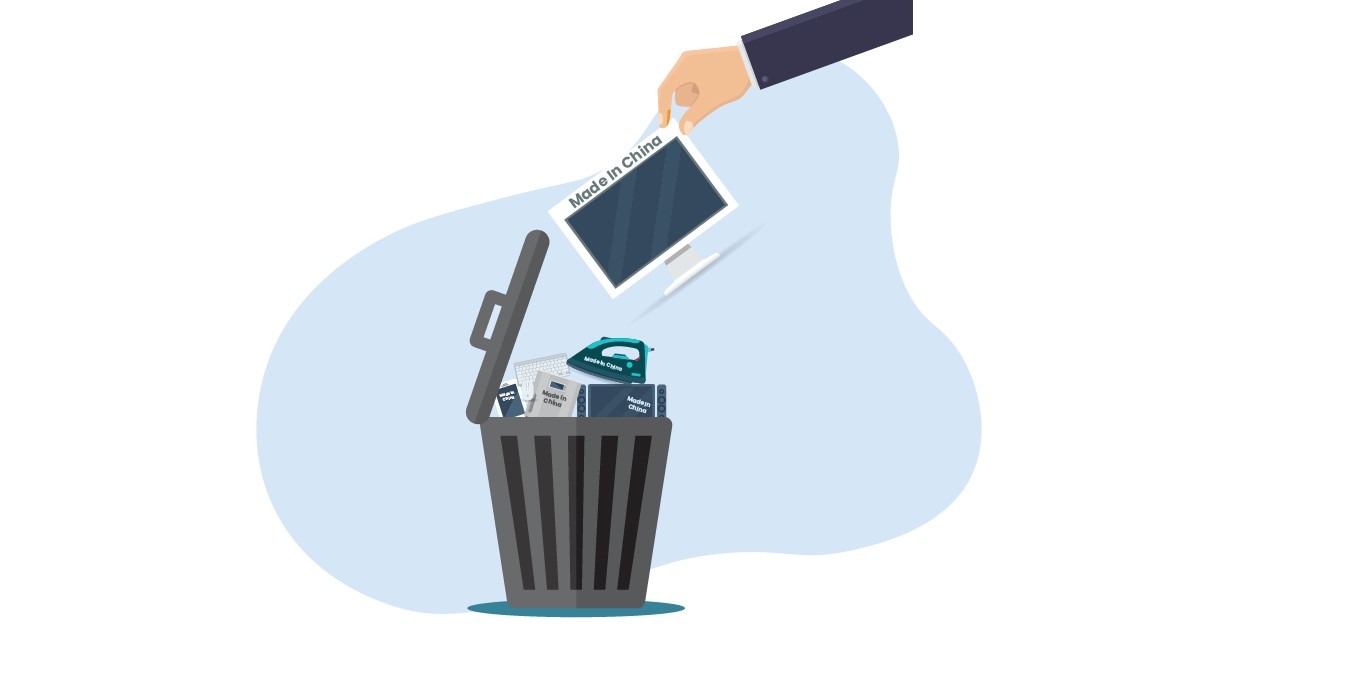Time and again, we have heard the call to boycott Chinese goods. However, in reality, till date, nothing effective has happened.
Just visit any toy store anywhere in India, and you can see that 90% of the toys will be Chinese. Same is the case with shops selling electronic items such as household appliances and smartphones.
Chinese smartphone brands such as Realme, Xiaomi, Vivo and Oppo feature among the four bestselling smartphone brands in India with over 60% market share. 30% of India’s automobile components are also sourced from China.
But that’s not all. The range of goods flooding our markets from China includes industrial goods, heavy machinery, auto parts, solar cells, fertilizers, optical instruments and pharmaceutical products including Active Pharmaceutical Ingredients (API) used in the manufacture of medicines including antibiotics.
You would be surprised to know that India imports almost five times more from China than it exports to it, resulting in a massive trade deficit with China.
The Chinese have also invested heavily in India’s start-ups. Check out the below table which shows Chinese investments in some of India’s start-ups.
|
Company |
Byju’s |
Dream11 |
Flipkart |
Ola |
Swiggy |
Big Basket |
Paytm |
Zomato |
|
Chinese Investment |
$50 million |
$150 million |
$300 million |
$500 million |
$500 million |
$250 million |
$400 million |
$200 million |
With rising border tensions between India and China, amid Chinese intrusions in Ladakh, anti-china sentiments are at an all-time high. People have taken to streets in many places in India in protest burning Chinese goods.
In one of our previous articles, we had written about how the two-wheeler segment in India has beaten China. You can check out the article here.
This brings us to million-dollar question- Can we boycott Chinese?
The government on 29th June, issued a blanket ban on 52 Chinese apps, citing a threat to national security and user data. While a ban on apps may not affect Indians using these apps in any way given the availability of many alternatives, the same cannot be said about all Chinese products.
An abrupt boycott of Chinese products may affect supply chains of some industries like auto and pharma, like what was witnessed in during the lockdown in China to combat the Covid 19 pandemic, early this year.
A step by step approach is the best way to go forward
Some importers are bringing in cheap Chinese goods in bulk which are quite easy to sell, such as toys, batteries, household plastic products and electronic goods. Such products are readily available everywhere for sale, including at departmental stores owned by big retail chains in India.
These products can from China can be easily replaced by Indian products. I am pretty sure most of us wouldn\’t mind paying a few extra bucks to buy Indian products in these categories. But to ensure this happens on a ground level, the government should strictly enforce regulations restricting the entry of such basic goods in India from China.
History can repeat itself
Post India’s independence in 1947, India’s pharmaceutical market was dominated by Western MNCs with over 75 percent of drugs being imported. All pharmaceutical products under patent in India were held by MNCs and as a result, and domestic Indian drug prices were costliest in the world.
To facilitate self-reliance in the sector, the government founded five state-owned pharmaceutical companies in the 60s and took a series of steps such as the abolition of product patents on food, chemicals, and drugs; the institution of process patents; the limitation of multinational equity share in India pharmaceutical companies, and the imposition of price controls on specific formulations and bulk drugs. As a result, by 1990, India was self-sufficient in the production of formulations and bulk drugs.
Today India\’s pharma sector is heavily dependent on China for raw materials. There is no reason why India\’s pharma sector cannot reverse this by repeating its history.
Scale-up India’s R&D expenditure
India should also scale up its expenditure on research & development as World Bank data for the year 2018 shows that India’s research and development expenditure as a percentage of GDP stood at a dismal 0.65% compared to China’s 2.19%, Japan’s 3.26% and USA’s 2.84%.
Bottom line
History reveals that consumer-based attempts to boycott goods from certain countries had failed in the past like when there was strong anti-American sentiment after the USA\’s sanctions on India after the Pokhran nuclear test in 1998. Consumer attempts to boycott American products like Coca-Cola and Pepsi were short-lived.
It is practically impossible to boycott everything that’s made in China. In today\’s globalized world, no matter what we do there will be somethings which cannot be produced in India or produced at a lower rate. For example, heavy machinery or rare earth minerals used in electronics. But yes, India can avoid unwanted Chinese products which are already being produced in India or can be produced in India. Proper infrastructure support to manufacturers, liberalized FDI and loans at cheap rates can help India compete with China. A robust government will and strict regulations are the need of the hour.
Related investing topics
Read more: How Long-term investing helps create life-changing wealth – TOI.
How useful was this post?
Click on a star to rate it!
Average rating 0 / 5. Vote count: 0
No votes so far! Be the first to rate this post.

